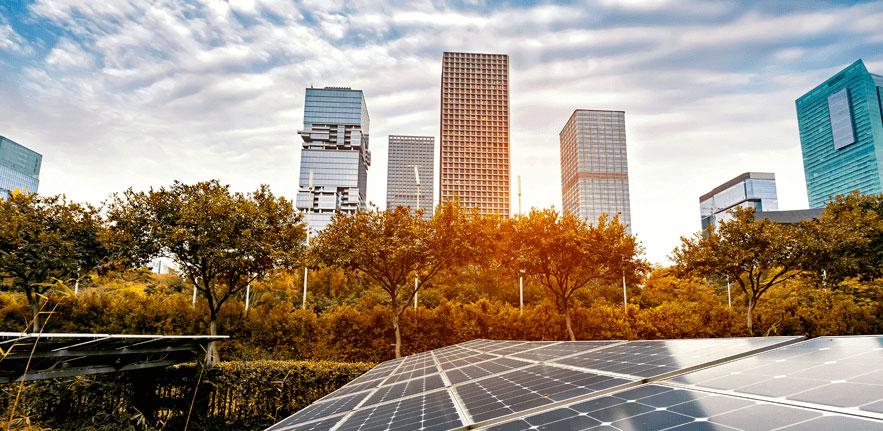
4 December 2023 - Nina Seega, Director of CISL's Centre for Sustainable Finance explains how it's time to pin down financial commitments to support developing countries through turbulent climate change.
Governments agreed in 2010 that developed countries would commit $100 billion a year by 2020 to help developing countries better manage the impacts of climate change—notably, extreme weather events like droughts and floods—and pay for adaptation measures to move away from fossil fuels and toward renewables.
That was at the UN climate conference COP16, seven years ago. As COP28 kicks off this week in Dubai, the seemingly eternal question of fulfilling the $100 billion commitment emerges yet again.
The Organisation for Economic Co-Operation and Development suggests, based on unverified data, that the target has finally been met. But even if this is the case, the International Energy Agency is clear that trillions, not billions, of dollars are needed to move the world to a net zero economy, removing as many greenhouse gases as it emits. Given this fact, governments need, during the climate talks in Dubai, to do much more to mobilize private finance to fill this huge funding gap.
The idea was that this $100 billion could come from a mixture of private and public sources based on bilateral or multilateral agreements, like the Green Climate Fund, set up to mobilize adaptation financing. However, there was no distinct amount set for adaptation or mitigation, just a single annual sum that should be met.
At COP21 in 2015, the Paris Agreement set down that developed countries would continue to mobilize $100 billion of funding a year through to 2025 and that prior to 2025, nations would agree upon a new goal for the following years.
Two years ago, at COP26 in Glasgow, however, it was clear that nations had not fulfilled the 2020 goal for a number of reasons, one of which was a lack of private finance.
Part of the problem is that it is not clear what “climate finance” actually means, and it is hardly unsurprising that the $100 billion target has not been met when neither governments nor private investors fully understand what they are investing in or which investments should be counted as “climate finance.”
If, for example, financing goes to reinforcing a bridge, is that climate finance since the bridge will be subject to more wear and tear due to storm surges or is it just general infrastructure financing?
Experts are working on this problem, but even without such additional confusion, it is safe to say that climate financing needs to be stepped up.
Total climate finance provided by developed countries in 2021 came to $89.6 billion, a 7.6% increase compared to 2020, according to the OECD. The percentage increase is far higher than that of previous years, and it is wonderful to see mobilized private finance revert back to 2019 levels, reaching $14.4 billion in 2021 after a dip in 2020.
Yet two issues are in clear need of attention. The first is that out of this figure, only a relatively small amount, $24.6 billion, was spent on adaptation measures, with the majority of the money going to mitigation projects. Further, this figure has decreased in recent years. The second is that the majority of this funding came from public sources.
Tackling both issues presents a substantial challenge, but it is certainly possible at COP28 to set in motion measures that will bring about change.
First, ideally there would be agreement in Dubai to substantially increase both mitigation and adaptation financing, encouraged by individual targets.
Second, participants need to officially recognize that public funding alone will not be enough to fund both mitigation and adaptation needs and they need to agree on a way forward to urgently unlock private finance.
We recently published a paper at the Cambridge Institute for Sustainability Leadership entitled “Everything, everywhere, all at once,” which examines the challenges and proposed solutions for unlocking private capital. It suggests options for strengthening risk management and guarantees, enhancing data transparency, incentivizing the private sector and supporting diverse and innovative financing models.
Promoting diverse financing models can diversify risks, making climate investments more bankable and attractive, potentially accelerating the pace of climate finance and enhancing its effectiveness in fostering sustainable development. These structures might include originate-and-share or originate-and-transfer models, whereby instead of banks keeping loans on their balance sheets until maturity, they distribute the loans, potentially freeing up billions of dollars in additional financing.
One promising model to unlock more private finance is the Bridgetown initiative. This proposal was put forward by Mia Mottley, the prime minister of Barbados, ahead of COP27 in Egypt in 2022. It sets down ways to reform the global financial system to ensure that it can increase climate resilience and finance the Sustainable Development Goals, while also dealing with the debt and high inflation crises facing poorer countries.
The Bridgetown Initiative asks for an increase in the lending for climate and for the Sustainable Development Goals from multilateral development banks to help boost investment in areas including climate resilience, water security and access to renewable energy.
Our paper also makes it clear that collaboration must be at the heart of all of these actions if climate goals are to be met in line with the Paris Agreement.
If the $100 billion goal has finally been met in 2022, this is a marker of progress, which should help move forward the climate negotiations at COP28. Yet, this figure is, in truth, paltry compared to the $1 trillion or more that will be needed annually by 2025 to meet the climate needs of poorer nations.
The pressure is on in Dubai to unlock the multitude of opportunities that private finance can provide and substantially increase the provision of finance to all emerging and developing economies.
Find out more about the Centre for Sustainable Finance
Visit our COP28 hub.
First published on the Forbes website.






